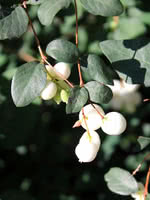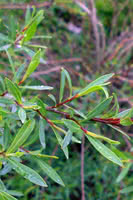Mon-Fri 9am - 5pm Mountain time
Western Snowberry vs Dwarf Arctic Willow
Symphoricarpos occidentalis
Salix purpurea Nana
NOT AVAILABLE THIS SEASON - MIGHT RETURN
NOT AVAILABLE THIS SEASON - MIGHT RETURN
Like the Common Snowberry, the Western Snowberry is a small shrub with pink flowers useful for feeding livestock and preventing erosion. Unlike the common species, however, the Western Snowberry is much more suited to wet conditions, capable of persevering through poor soil drainage and occasional flooding.
After the Snowberry's flowers have bloomed, it produces berries which often last on the plant through winter. These berries are toxic to humans, but livestock and local wildlife love them! Those hoping to attract wildlife to their property can plant Snowberry and expect to see animals foraging on it much later in the year than other plants.
Dwarf Arctic Willow is a beautiful ornamental shrub that attracts butterflies. It grows into a low dense, rounded shrub with slender purple stems. The Dwarf Arctic Willow has bluish-green foliage throughout the season and stunning when planted as an artistic hedge. Cold hardy and juglone tolerant, this shrub will make a nice addition to your urban garden.
Western Snowberry Quick Facts
Dwarf Arctic Willow Quick Facts
Toxicity: berries are toxic to humans

